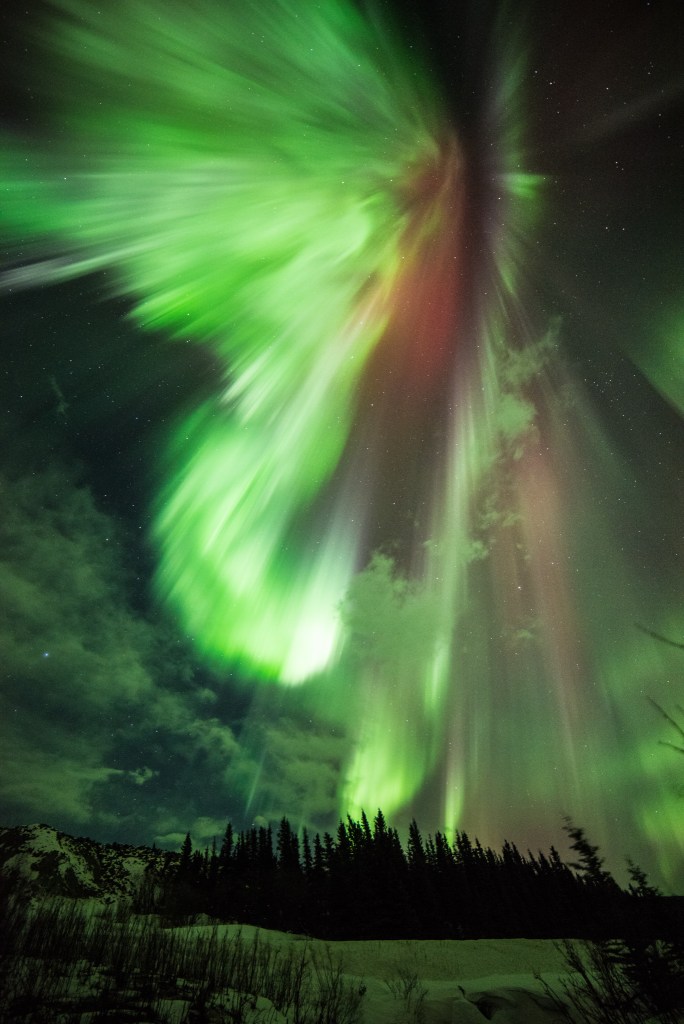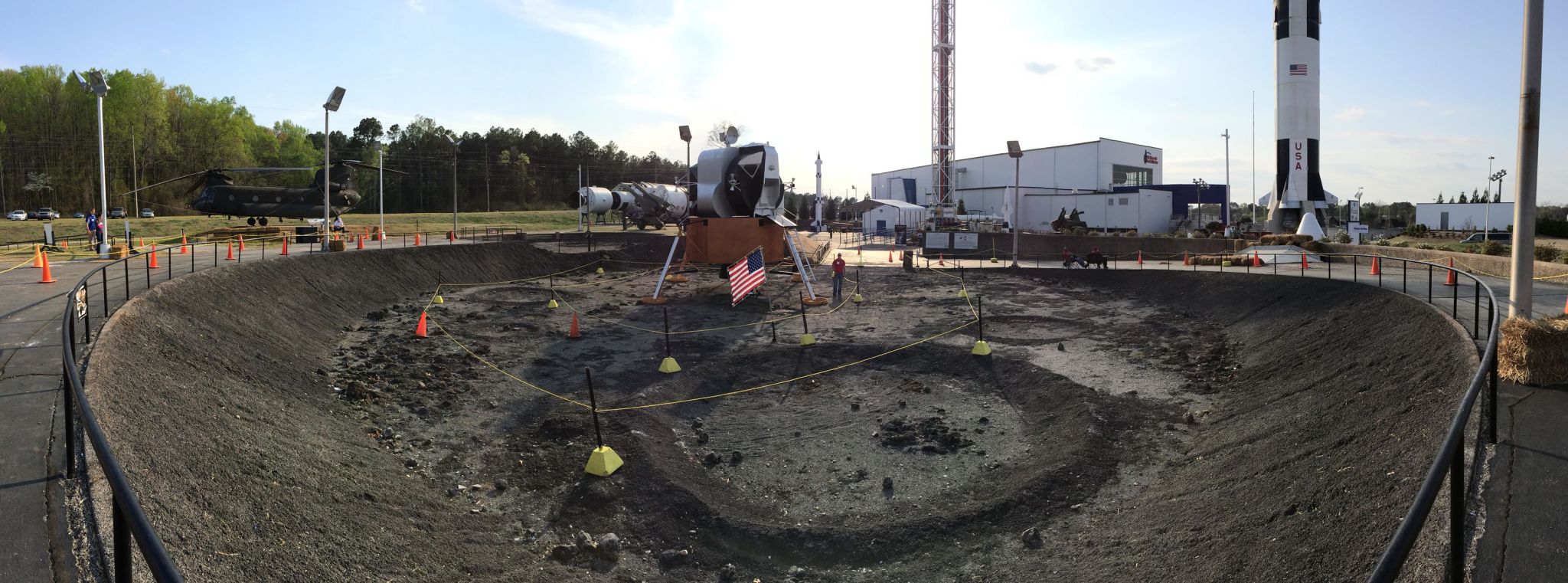This is the fourth and final installment in the series. Click on these links to read Part One, Part Two and Part Three.
As we near the April 11 kickoff of the first NASA Human Exploration Rover Challenge, organizers are installing obstacles on the course at the U.S. Space & Rocket Center in Huntsville, Ala., finalizing agenda details and awaiting the arrival of more than 500 student engineers and athletes, plus their team advisors and “cheering sections.”
Race organizers at NASA’s Marshall Space Flight Center in Huntsville are pleased to see so many veterans of the classic, 20-year NASA Great Moonbuggy Race signing on to take their engineering endeavors to the next level — and so many newcomers as well. They’re confident spectators will see a fleet of ingeniously crafted vehicles and a host of exhilarating performances from rookies and veterans alike.
For those completely new to NASA’s brand of engineering-themed student racing competitions, organizers suggest keeping an eye on some veteran contestants whose winning combination of heart, energy and innovation has led them to victory in years past:
The Puerto Rico teams: For much of the last four years of the NASA Great Moonbuggy Race, teams from Puerto Rico were consistently among the best of the best. Teams representing Teodoro Aguilar Mora Vocational High School of Yabucoa, Puerto Rico, won the high school division in 2011 and again in 2013. Petra Mercado High School in Humacao took the top high school spot in 2012. In the college division, the University of Puerto Rico in Humacao proved a fearsome competitor — winning second place in 2009 and 2012 and first place in 2010, 2011 and 2013!
What’s their secret? “They network, they support one another, they train together,” said Marshall education specialist Diedra Williams, who leads Rover Challenge planning for the Academic Affairs Office at the Marshall Center. “It’s hard for some teams traveling from far away to raise sizeable cheering sections to come with them. The teams from Puerto Rico get around this problem by rallying to support each other — playing music, singing and rooting for their new competitors just as enthusiastically as the veterans. That positivity and energy definitely is reflected in their performances.”
The University of Alabama in Huntsville (UAH): Hometown university teams dominated the NASA Great Moonbuggy Race when it began in the mid-1990s, but fell out of contention again until the final years of the contest. Teams from this school won second place in the college division in 2011 and first place in 2012.
There is no hometown advantage, but race organizer Dennis Gallagher, a space physicist at the Marshall Center, said UAH’s approach to the event reflects a winning program for a number of participating schools. “They incorporate events such as this one into their engineering curriculum, and solicit hard-working students to participate on their teams,” he said. “More than one career-minded, successful Marshall Center team member started out as a student competitor in an event just like this one. People at these schools — students and instructors alike — carry it forward from year to year, and create legacy teams that refine winning formulas, bring new ideas to bear and over time will deliver rovers to reckon with.”
“Team Germany”: High-achieving students from around the world take aerospace engineering courses at the International Space Education Institute in Leipzig, Germany, and for much of the last half-decade of the NASA Great Moonbuggy Race, these energetic, polyglot teams — a combination of German, French, Chinese and Russian students — fielded winning vehicles. “Team Germany” won the high school division in 2010. An all-Russian team sponsored by the school won second place in the college division in 2013.
“They’re inventive and passionate,” said Dr. Frank Six, university affairs officer at the Marshall Center and one of the race organizers and course designers. “They consistently pursued high-tech solutions to the engineering elements of the previous competition, and we can’t wait to see how they’ll address this year’s wheel technology challenge.”
The Rookie Phenoms: Scrappy newcomers never fail to leave an impression. Consider Jupiter High School from Jupiter, Fla., a school that won second and third place in the 2013 competition, and also finished third in 2010 and 2011. They’d never competed before 2010. Or the Rhode Island School of Design in Providence, which didn’t include a single engineer on its rookie team in 2010, yet still won third place in the college division on its first try. Not bad for a group of industrial design students with no practical engineering experience!
“I love spirited, out-of-left-field teams like these,” said race planner Tom Hancock, past chair of the American Institute of Aeronautics and Astronautics’ Greater Huntsville section. “They show up with no experience, often with a fairly simply constructed vehicle with no bells or whistles, and make their presence known immediately. That’s what I love best about this kind of event — seeing talent and enthusiasm combined to deliver a memorable showing or even a win. I love those gutsy newcomers who leave completely changed by the race. You can see it in their faces. This experience will stay with them forever.”
Williams agreed. “You never forget the ones who try something truly original, or the ones who get up after a particularly ugly crash and get right back on the vehicle and keep going.”
“This year, starting a whole new era in NASA student engineering challenges, we expect to see nearly all of them leave transformed by the experience,” she added.
Teams are ready. Rovers are test-driven one last time and stowed for transport. Bags are packed. Flight reservations are checked. Vehicles are gassed up for long hauls.
And the starting horn draws ever nearer…
Race Coverage Links
The NASA Human Exploration Rover Challenge will begin at 7:30 a.m. CDT April 11-12. Watch the live streaming broadcast on UStream and receive real-time race updates via Twitter. North Alabama residents are encouraged to come watch in person — admission to watch the race is free with any paid ticket to visit the U.S. Space & Rocket Center. For more information about the event, visit the official website.
Finally, we’d like to take the opportunity to thank those who make this event possible. The Rover Challenge is sponsored by the Human Exploration and Operations Mission Directorate at NASA Headquarters in Washington. Major corporate sponsors are Lockheed Martin Corporation, The Boeing Co., Jacobs Engineering ESSSA Group, Aerojet Rocketdyne and Northrup Grumman Corp., all with operations in Huntsville. Other corporate and institutional contributors include Science Applications International Corporation (SAIC) of Huntsville; ATK Aerospace Systems of Salt Lake City, Utah; Davidson Technologies of Huntsville; the Universities Space Research Association (USRA), headquartered in Columbia, Md.; Teledyne Brown Engineering of Huntsville; AIAA, headquartered in Reston, Va.; the Tennessee Valley Chapter of the National Defense Industrial Association (NDIA), headquartered in Arlington, Va.; Infotech Enterprises of East Hartford, Conn.; Corporate Office Properties Trust (COPT), headquartered in Columbia, Md.; the Tennessee Valley chapter of the International System Safety Society, headquartered in Unionville, Va.; and Booz-Allen Hamilton, AI Signal Research Inc., MSB Analytics, the National Space Club, the U.S. Army Aviation and Missile Research Development and Engineering Center (AMRDEC), Redstone Federal Credit Union and Industrial Fabrication Co., all of Huntsville.



























